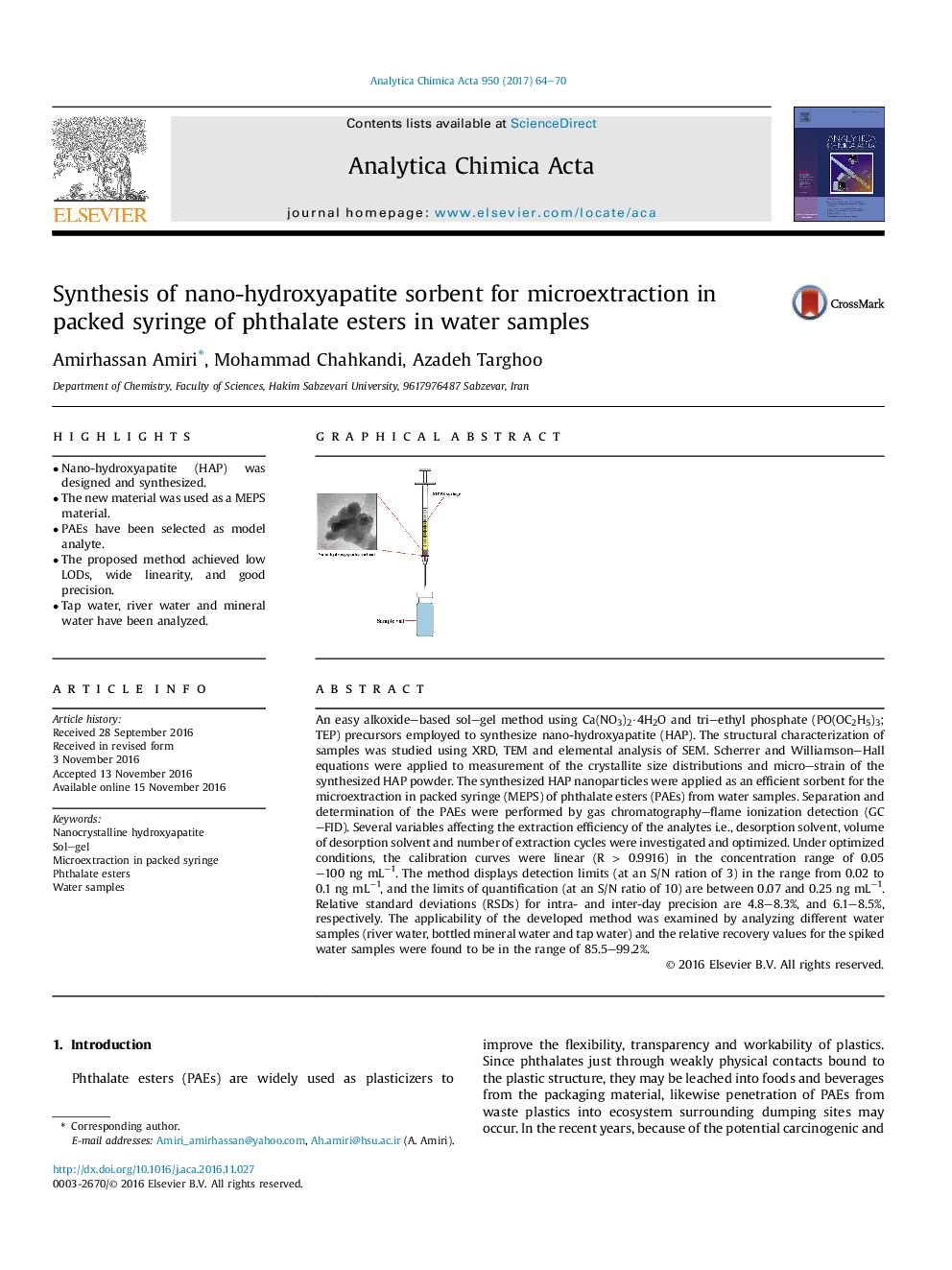| کد مقاله | کد نشریه | سال انتشار | مقاله انگلیسی | نسخه تمام متن |
|---|---|---|---|---|
| 5131067 | 1490882 | 2017 | 7 صفحه PDF | دانلود رایگان |

- Nano-hydroxyapatite (HAP) was designed and synthesized.
- The new material was used as a MEPS material.
- PAEs have been selected as model analyte.
- The proposed method achieved low LODs, wide linearity, and good precision.
- Tap water, river water and mineral water have been analyzed.
An easy alkoxide-based sol-gel method using Ca(NO3)2·4H2O and tri-ethyl phosphate (PO(OC2H5)3; TEP) precursors employed to synthesize nano-hydroxyapatite (HAP). The structural characterization of samples was studied using XRD, TEM and elemental analysis of SEM. Scherrer and Williamson-Hall equations were applied to measurement of the crystallite size distributions and micro-strain of the synthesized HAP powder. The synthesized HAP nanoparticles were applied as an efficient sorbent for the microextraction in packed syringe (MEPS) of phthalate esters (PAEs) from water samples. Separation and determination of the PAEs were performed by gas chromatography-flame ionization detection (GC-FID). Several variables affecting the extraction efficiency of the analytes i.e., desorption solvent, volume of desorption solvent and number of extraction cycles were investigated and optimized. Under optimized conditions, the calibration curves were linear (R > 0.9916) in the concentration range of 0.05-100 ng mLâ1. The method displays detection limits (at an S/N ration of 3) in the range from 0.02 to 0.1 ng mLâ1, and the limits of quantification (at an S/N ratio of 10) are between 0.07 and 0.25 ng mLâ1. Relative standard deviations (RSDs) for intra- and inter-day precision are 4.8-8.3%, and 6.1-8.5%, respectively. The applicability of the developed method was examined by analyzing different water samples (river water, bottled mineral water and tap water) and the relative recovery values for the spiked water samples were found to be in the range of 85.5-99.2%.
117
Journal: Analytica Chimica Acta - Volume 950, 15 January 2017, Pages 64-70